The Gift of South Dakota
Subscriptions to South Dakota Magazine make great gifts!
Subscribe today — 1 year (6 issues) is just $29!
The Entertainers of Milbank
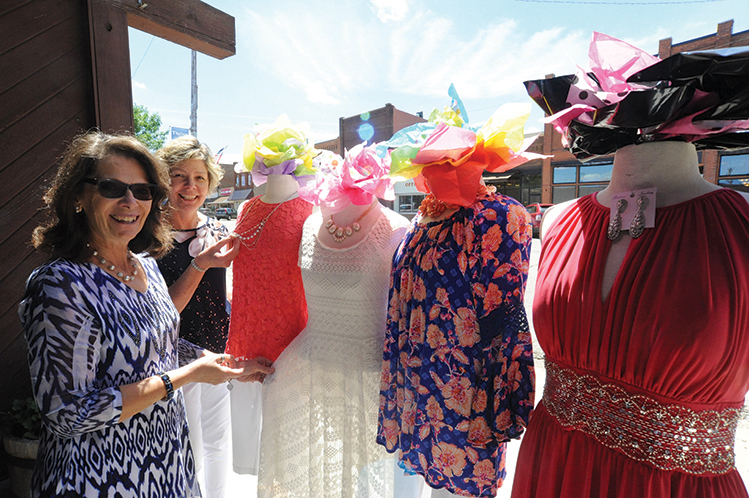 |
| Linda Junker Buri (left) and Bridget Jensen are enjoying a revitalized Main Street in Milbank. |
Milbank long ago distinguished itself with baseball, cheese, granite and a big-winged flour mill. But why stop there?
Now the Grant County town’s old shopping district has blossomed in an age when retailers nationwide are closing their doors. It’s a pleasant surprise to everyone, akin to discovering that your grandfather has some special and useful talent; who knows where it might lead but it sure feels good today.
The retailing renaissance is happening within a three-block downtown district, sandwiched on the east by a shady, old residential district and several historic churches. The 80-foot tall stainless steel milk tanks of Valley Queen Cheese are just west of Main Street. To the south stand the stately Grant County Courthouse and a towering statue of a Civil War soldier.
Other than that old bronze soldier, few people have a better perspective on Milbank’s downtown resurgence than Linda Junker Buri, who started a women’s clothing store called Linda’s in 1975 when malls were the rage. She credits the turn-around to architecture, travelers on Highway 212, visitors to nearby Big Stone Lake and hometown marketing. Once a customer comes in the door, there’s still the matter of giving them what they want. “People want service, service, service. So you must know your customers’ needs,” she says.
Buri also believes fresh attention to the city’s old architecture is making a difference. She credits that in large part to Mark Leddy, a local businessman who has overseen the restoration of several business buildings. “He has a real vision for bringing the buildings back to their original design and appearance.”
Milbank’s downtown area features a Mexican restaurant, a movie theater, a coffee shop and eatery, a cheese shop with antique dairy displays and cow bells, a furniture shop specializing in creative repurposing, a design studio with a vintage radio booth for local podcasts, a clothing store that plans local photo shoots and a book store that throws birthday parties and “book-tastings.” Main Street is as entertaining as it’s ever been.
Years ago, a big sign hung over the street with the words “You’ll Like Milbank.” It was taken down for some reason and is now stored in the basement of the cheese shop. Local business owners think it might be appropriate to rehang it soon because the city of 3,500 seems ready to deliver on the slogan’s promise.
Milbank has a history of standing apart, beginning in 1880 when it was founded as a railroad stop. Within months, the new town went to war with Big Stone City over the coveted title of county seat. After skirmishes that included shotguns, pitchforks and lawyers, Milbank won and built an impressive three-story courthouse in 1915 that has been beautifully maintained for a century.
A flour mill with four big blades, built in 1884 by an Englishman named Henry Holland, has become the town’s symbol. The city also has the distinction of being the birthplace of American Legion baseball, which began at a state Legion convention in Milbank when members voted to sponsor a national tournament. Today more than 80,000 youth play Legion ball, and half of the players in the Major Leagues are alums.
Milbank’s biggest food adventure came in 1929 when two Swiss-born Wisconsin cheese makers came to town and started a plant that now employs more than 220 people and buys milk from dairy farmers throughout the region.
The 1920s also brought the development of quarries, where granite deposits — some thought to be 15 miles deep — lie west of town. Mining the ancient deposits remains a multi-million dollar mainstay of the local economy.
So who knows where today’s Main Street renaissance will lead? Nobody could have imagined that the cheese factory, the quarries or the flour mill would be around in the 21st century. Can a new style of entertainment retail (some call it retail-tainment) also grow into something big?
Milbank storeowners are as intrigued as anyone with their role as entrepreneurial contrarians to national trends. “My husband and I have a lot of conversations about Amazon and online sellers,” notes Amy Thue, co-proprietor with her sister, Sara, of a books and gifts store called Whimsy. “It seems that people once wanted two-day shipping, and then they wanted overnight shipping. Now the pace is so fast that they don’t want to wait at all. They want it now,” she says. That means heading to the nearest store.
“I can’t say I ever imagined being in retail on Main Street,” Thue says. “You are doing odds and ends and somewhere along the way it all comes together. So here we are, with our own little piece of Main Street.”
Here are some of the interesting people and places in today’s Milbank.
THE CHEESEMAKERS
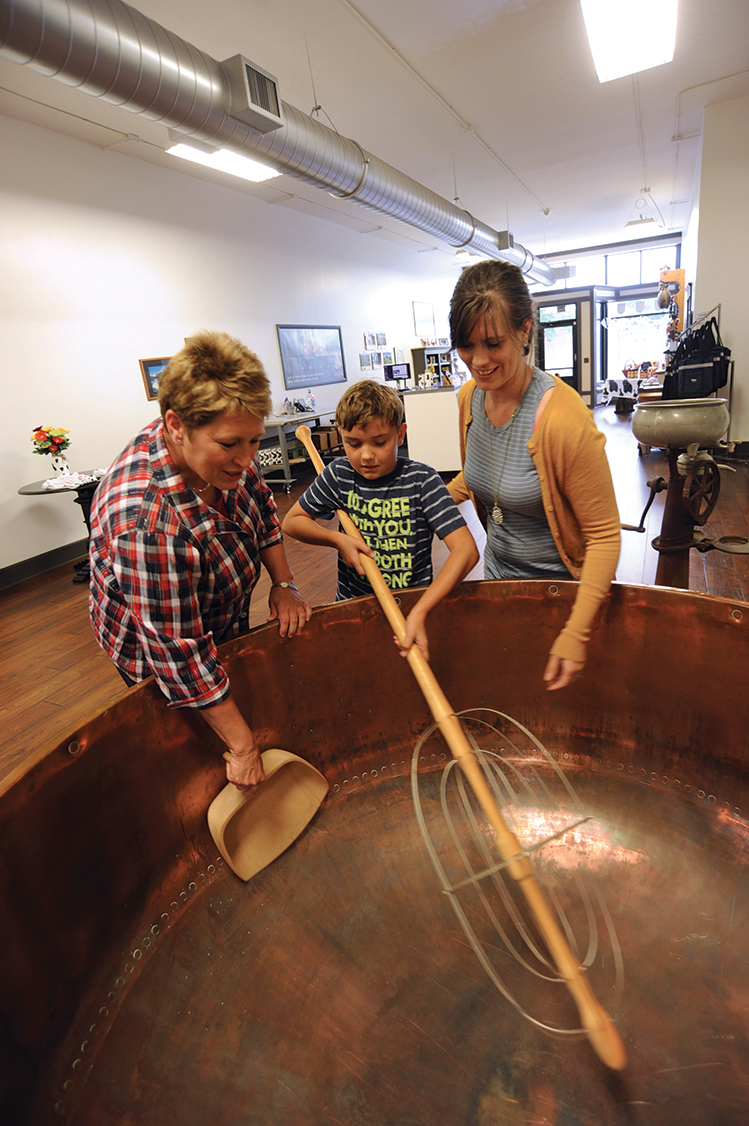 |
| Kerry Fish (left) and Stephanie Pillatzki teach old-time cheese-making. |
Grant and Brookings counties have more dairy cows than anywhere else in South Dakota because Wisconsin cheesemaker Alfred Gonzenbach drove through town in October of 1928 on his way to Montana, where he and his partner Alfred Nef hoped to find a site for a new plant.
Learning of his intentions, Milbank leaders gave Gonzenbach a tour of the town and the nearby dairy farms. They offered a deal on an empty brick water plant, and Gonzenbach never bothered to go west to Montana. By the following March they were doing business as Valley Queen Cheese Factory in Milbank. Today, Gonzenbach and Nef descendants, along with 270 employees, produce 140 million pounds of cheese a year. Nearly all their milk comes from dairy farms within 60 miles of town.
Most of the cheese is sold in 700-pound blocks to other food companies. Valley Queen has long sold family-size blocks to local people at the main office but the receptionist sometimes became too busy selling cheese to answer the phones, so the company has now opened a retail store called The Cheese Shop, adding to the momentum of Milbank’s Main Street resurgence.
“The Nefs and Gonzenbachs want to maintain the Swiss heritage and the local traditions,” says Kerry Fish, who manages the store. Swiss cowbells, antique cheese-making memorabilia and photos from the factory’s pioneer days are displayed in the store, but it isn’t all about Valley Queen. They also sell candies, pretzels and other products made by other South Dakota companies — even cheeses made by a competitor in the little town of Dimock.
A BEDROCK INDUSTRY
Workers have been mining granite from Grant County for over 100 years. The reddish brown stone crystallized more than 2 billion years ago.
I’m at Dakota Granite, standing at the bottom of a 180-foot deep quarry. They take the stone out in 3-by-6-foot slabs called loaves, lifting them with quarter-inch steel cables banded by rings encrusted with diamonds.
Once on the surface, the loaves are sliced by giant circular saws, some with blades more than 11 feet in diameter. Forty-foot long polishing machines run around the clock.
Computerization has arrived at the quarry but some tasks are better done by hand. Artisans work with hammers and chisels to shape the stone. Pat Raffety, the plant manager and part-time mayor of nearby Milbank, says his craftsmen spend two years or more mastering the skills.
Most of Dakota Granite’s products are used for countertops and memorial stones, but granite from the area has also been used on the FDR memorial in Washington, D.C., the Ford Foundation headquarters in New York and Toyota’s Tokyo offices. It also forms the first floor of the state capitol in Pierre.
— Rich Jensen
NOW AND THEN
Did you ever see a “sandwich board” store sign made from a baby crib? That’s just one of many novelties at Milbank’s Now and Then Store. “I hate to see furniture taken to the landfill,” laments the creative proprietor Carol Geisinger. “I cringe when I hear the word ‘dump.’ If something has already lasted 50 or 60 years or more, it’s probably sturdy enough to be around another 50 or 60 years if you can just find a new purpose for it.”
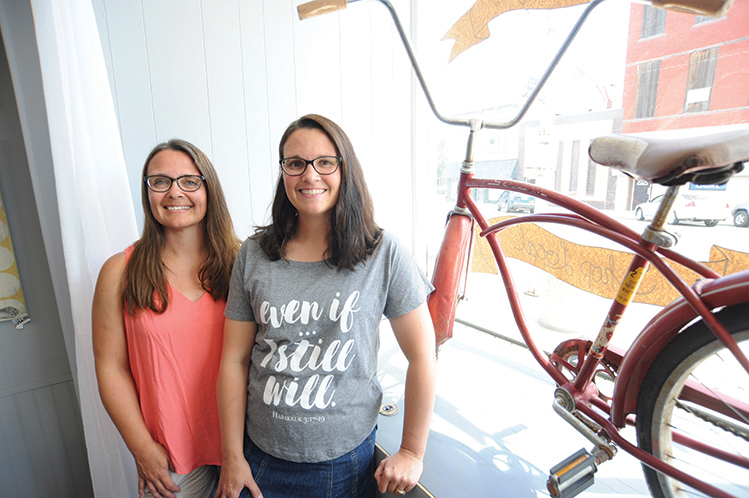 |
| Themed parties are business as usual for Sara Snaza (left) and Amy Thue. |
WHIMSY ON MAIN
Want a better Milbank? Then build it yourself. That was the message of Jason Roberts, a national advocate of urban development, when he visited Grant County a few years ago. Amy Thue and Sara Snaza, sisters and both former school librarians, took it literally and started Whimsy, a fun-filled shop that sells books, toys, crafts, gifts and home décor. They organize kids’ themed birthday parties for busy moms, and book readings for children. They started Whimsy in another location before buying an old jewelry shop (safe and all) for $35,000; their husbands helped them remodel it into a stylish store that exemplifies Milbank’s embracement of retail-tainment.
URBAN THREADS
Lindsey Keller taught first graders and ran her clothing store, Urban Threads, part-time before taking the business plunge and opening full-time in an historic building on Main Street. She features women’s clothing and some lines for men and youth. As one of many female entrepreneurs in town, she’s quick to note that the spouses are often full partners. Her farmer-husband can run the cash register and the tagging gun. “Tyler even went to market with me in Chicago and he picked out some of the men’s shirts,” she says. “I could not do this without him.”
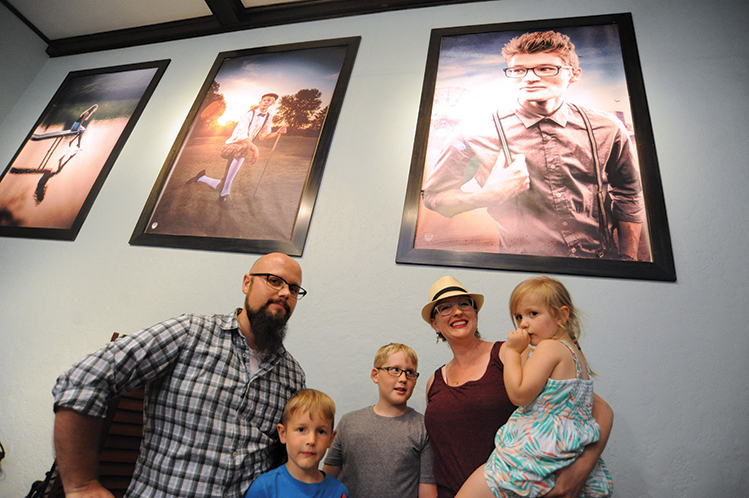 |
| Craig and Sarah Weinberg bring creativity, energy and three children (Edward, Calvin and Penelope) to Main Street. |
VPD STUDIO
Sarah Weinberg and her husband, Craig, came to Grant County from Oregon to care for her aging grandparents. “We never thought it would be a permanent situation,” says Craig. “But the community was fantastic. We got a house in town and then we got a building on Main Street.” He runs a photography and design studio, and she holds art classes. Both have immersed themselves in local culture. Sarah started a “Milbank Rocks” program, helping kids paint rocks and hide them as surprises around town. Craig worked with local high school students to produce a video titled “Why Milbank: Telling the Stories of Our Communities.” He also built a sound studio for podcasting and is now encouraging college students to talk of their relationships with their hometown. He and a friend also produce The David Allen Show, a series of political podcasts.
MUSCLE CARS
Not all of Milbank’s interesting businesses are downtown. Jim Gesswein’s car dealership is on Highway 15, on the south edge of the city. He’s been selling cars since the early 1960s, and in the last 25 years he’s become a collector and seller of America’s favorite “muscle cars,” family-size sports cars with big V-8 engines. Gesswein likes vehicles from the ’60s and ’70s, and he likes the people who like such cars even more. “I sold a ’64 Imperial to a couple from Sweden who came out, picked it up and drove it to the Black Hills before they went back. I still hear from them every couple weeks.”
— Rich Jensen
Editor’s Note: This story is revised from the September/October 2017 issue of South Dakota Magazine. To order a copy or to subscribe, call (800) 456-5117.


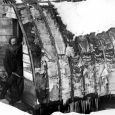
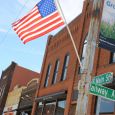




Comments